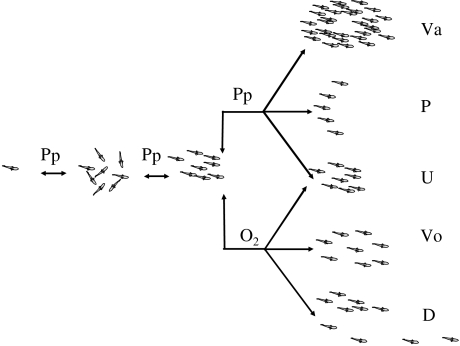Figure 10.
The effect of hypoxia and predator–prey interactions on the aggregation behaviour of fish. From left to right, predator–prey (Pp) interactions may cause single fish to join in a group or vice versa, and they may affect the degree of polarization of a school and they may affect school speed (indicated by ‘U’) and shape (Pitcher & Parrish 1993). (Va) and (P) represent school shapes as described in Pitcher & Parrish 1993 (Va, ‘vacuole’ as a response to predator attacks) and Partridge et al. (1983) (P, ‘parabolic schools’ of predators), respectively. Oxygen level (O2) may affect school volume (Vo), it may cause schools to disrupt (D) and may affect school speed (U). Changes in speed do not imply changes in school shape.

